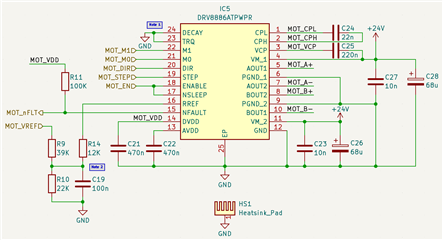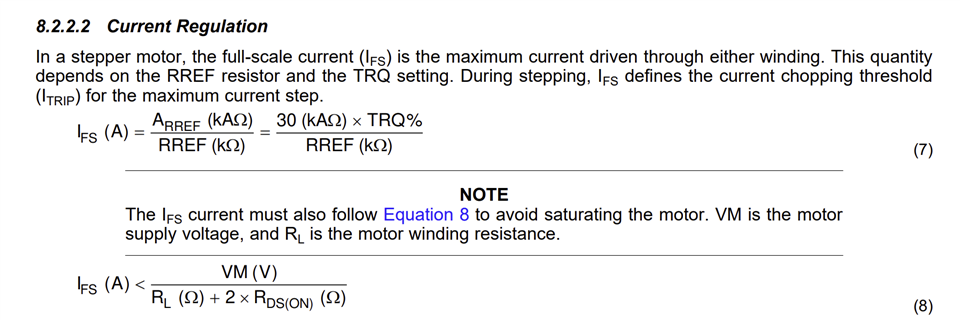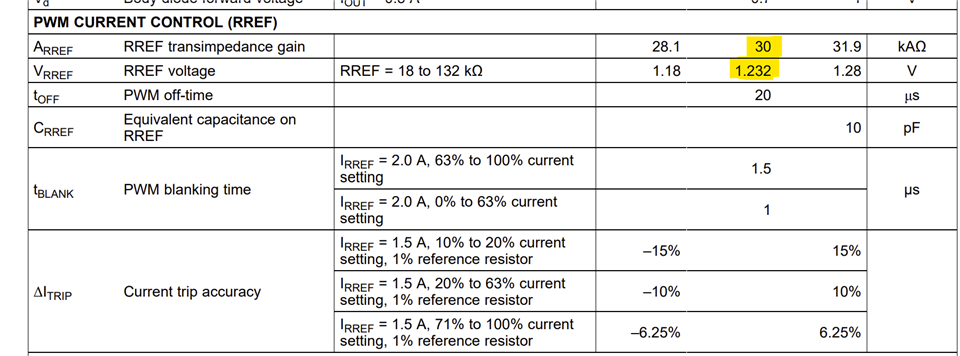Other Parts Discussed in Thread: DRV8886, DRV8434, DRV8434S
Tool/software:
See the designed schematic including DRV8886AT below.

The matter of question is how to properly set up RREF voltage for a desired current limit of motor bridge regulation circuit of DRV8886AT. The chosen method is via PWM (from MCU not shown here). The left-most resistor divider ensures the voltage over the C19 capacitor is cca. 1.2V max during PWM ON cycles (3.3V from MCU). From my calculation the equivalent resistance of R9 and R10 is 16.6kOhm. This resistance with C19 gives the cutoff frequency of around 10Hz. The source (MCU) PWM frequency is 10kHz.
Now, the RREF resistor is set for 12kOhm which should result in a full-scale current of 2.5A. From my measurements on assembled PCB, 100% PWM DC gives the lowest current limit and 0% DC gives the highest current limit. However, it appears the full-scale current is still way below 2.5A because no matter the speed setting, the motor will not spin if M0 and M1 are set for full step setting. Also, the highest observed current per the whole motor was at the highest motor speed at 1/16 micro stepping setting and was 0.5A.
I guess I misunderstood how to set a full-scale current properly. However, I have followed the DRV8886AT datasheet and calculations to the point. So the question is how do I ensure my full-scale current is met? It seems the current limit is still too low for the motor to spin at full-step setting (the highest current consumption due to the highest torque).




